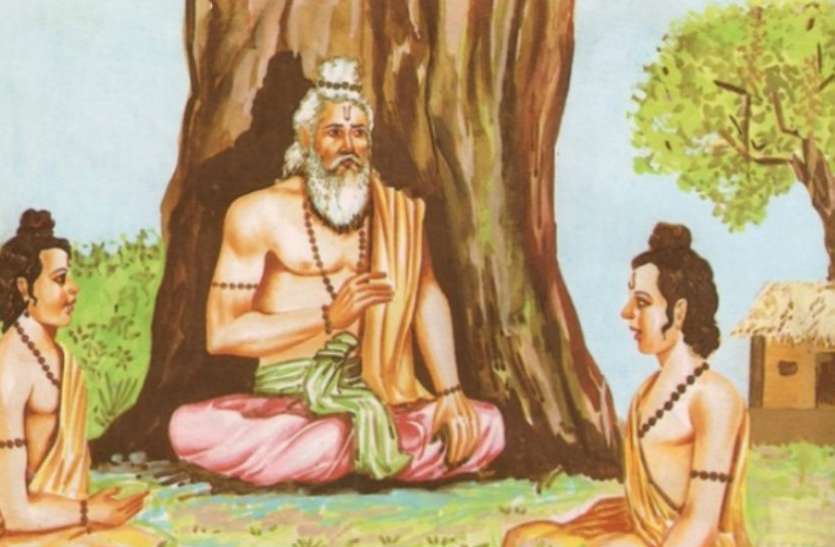In Mahbharat, Paushyaparva is the third upa parva, under the first parva namely the Adi parva. The original name of the Mahabharat book was Jaya, as Vyasa, the original author had desired. Then, Suta Puranikas, the story tellers called the same book with other names, and it is also known as Panchama Veda. Now, the Sanskrit name of this upa parva is Paushya and it would be better to study regarding the word Paushya. It is recommended to read the article Uttanka in Ramayana and Mahabharat before preceding the following elaborations on Paushya. In the Ramayana epic, one of the stars in the sky, Tishya had been referred. The same Tishya had been renamed by Suta Puranikas as Pushya in Mahabharat. After the star Pushya, the next star is Ashlesha, or Ayilyam as named in south Indian languages.

Ashlesha is the word, obtained by joining the two words Adi and Shesha. Hence when the Moon entered Ashlesha and Arjuna had invited Adi Shesha, but his father, Indra had represented during the serpent’s yajna. Indra told Arjuna, let the serpent’s yajna be stopped in the star of Pushya itelf, that one star prior to Ashlesha. The next oblation token turn was open for Takshaka, but got held up then. Indra instructed Arjuna to allow Takshaka to go freely to Takshashila and live happily there. Arjuna was born by the boon of Indra. Arjuna obeyed Indra’s instructions. Thus Takshaka got longevity and lived at Takshashila for a long time.
Paushya is a Sanskrit word, obtained by joining the two words, Paurnatva and Avashishya. When Janamejaya started serpent’s yajna, Takshaka had taken shelter under Indra. Indra with the following Upanishadic view appeared before Janamejaya in advance of inviting Takshaka and before raising the star of Pushya on the sky. Again, the word Paushya had influenced its importance on the life of Takshaka. The philosophical views of various Upanishads appeared in the context of this upa parvas, say the importance of punctuality as one example.
ॐ पूर्णमदः पूर्णमिदं पूर्णात्पूर्णमुदच्यते । पूर्णस्य पूर्णमादाय पूर्णमेवावशिष्यते ॥
The meaning: The verse addresses starting with the pranava OM regarding the perfection of God. During the offerings to oblations, man offers some items but the perfect God had already created and allowed some items to human beings previously. After taking some items from the perfection of God still the perfection prevails there itself. Simply, a man could not alter the perfection of God.
According to the philosophy of perfection, if a system achieves its perfection, then it becomes inert or starts to disintegrate gradually. But God is above this philosophy and does not change in qualities of perfection. This is the essence of the Upanishad and called as Indian philosophy. Upanishads are illustrated in various chapters of the Mahabharat elaborations.
Indra had helped Uttanka in the Nagaloka. Indra had represented during the serpent’s yajna. As mentioned earlier, Indra had told Uttanka that the serpent’s yajna be stopped in the star of Pushya itelf, one star prior to Ashlesha. Uttanka obeyed Indra’s Instructions. Thus Takshaka got exempted from oblation and was allowed to return to his old residence at Takshashila. Janamejaya had noted it but kept his silence.
Thus this upa parva had got the name as paushya parva. Since the character and name of Uttanka had been originated in the epic Ramayana, it had not got highlighted in Mahabharat. In order to feel a difference in experience, by bestowing a sense of kindness towards the reptiles, or serpents, the narrations in the name paushya parva is justified, as paucity of hardships. Adi shesha, the serpent, represented by Takshaka would live for ever since he had swallowed the ambrosia or amrit, say nectar.
The explanation for incomplete yajna is evident. To take revenge is not a good policy. Similar to Rama of Treta yuga, the main controller of Mahabharat, Krishna was in Dwapara yuga and also both were peace lovers. The Panchagavya is a sanitary mediator substance which segregates purity from impurity related items. Hence the importance of Panchagavya was recited as mandatory prior to the starting of serpent’s yajna by Janamejaya.
Yudhishtira was elevated to heaven but a dog had followed him till the height of the Himalaya Mountain. That dog was Kala Bhairava or the angel Yama, god of death. The divine family members are usually represented by the three persons. The wife of God Kala Bhairava was Bhadra kali, was in the form of a female celestial dog with the name Sarama, had lived in the proximity of palace of Janamejaya. The son of Goddess Bhadra kali, the young angel, was Ganapathi in disguise, was in the form of a small dog with the name Sarameya and had lived in the palace of Janamejaya and his brothers who could recognize it as a dog.
During the start of the serpent’s yajna, Uttanka was in a hurry and could not memorize the initial worship of God Ganapathi. In order to remind Uttanka and Janamejaya, Ganapathi, in the form of Sarameya, had glanced the ground by physical visit of the holy place. Even though Sarameya had not touched anything of the sacrificial items or snakes, he was beaten by the brothers of Janamejaya. Then with the painful sufferings, Sarameya returned towards his mother and the mother dog had cursed Janamejaya and his brothers for their lapses. Finally in the serpent’s yajna, Takshaka had lived by the benefit of this curse.
Paushya parva emphasized the importance of tests of disciples by the teachers. The path of Dharma was not smooth to go ahead. Hard work and determination were the leading items for the disciples in their real life.
Ayoda Dhaumya was a great scholar and had three disciples. They were Upamanyu, Arani and Veda. Upamanyu was entrusted to look after cattle grazing works. In order to test Upamanyu, one evening, his teacher enquired about his food habits. He used to obtain food by alms and his teacher disallowed the practice of asking for food. Thereafter, Upmanyu used to drink some milk of the cows and later his teacher disallowed him using milk as food. Later when he could not tolerate hunger, he had eaten arka leaves from the forests and then he had become blind and fallen into a dry open well while returning home in the evening.
The teacher, Ayoda Dhaumya had searched for him with the help of his other disciples and found him inside the well. They had taken him home and the teacher had taught him verses from Rigveda to recite in praising of the angels Ashvini brothers. With concentration, he had recited them and he got the boon from Ashvini brothers when the angels were pleased up on him. He got his vision capabilities with good health. Then the teacher discharged him, to his home, declaring him as he had successfully completed his education. Later he had taught as a special teacher the martial arts of using discus to God Krishna.
Arani, the second student was entrusted to look after agricultural works. One evening, his teacher had instructed him to visit the paddy fields and check the water levels for the plants. At one place, there was a break and water was flowing out. As the boy could not stop the flow, he himself had to lay on the ground to prevent the water flow and managed to store the water for the plants, at steady level. Hence, he could not leave from the place and decided to remain in the night there itself.
The teacher, Ayoda Dhaumya had searched for him with the help of his other disciples and found him on the paddy fields laid up. His teacher was very much pleased to see his dedicated service and declared him as he had successfully completed his education. In Sanskrit, Udaka is water and Balaka is boy. To get the meaning as the boy reacted with water, the teacher called him as Uddalaka. The two words Udaka and balaka had been joined and made as Uddalaka, hence he was called Arani Uddalaka. The teacher and the disciples had maintained good relationships.
The third student Veda had also studied there and discharged when his education was completed. When many students have learned with high intelligence and got discharged from their teachers, usually no stories had been memorized. Only dull disciples have been specially treated by the teachers with extra care and hence these special stories. In Mahabharat, Uttanka was mentioned as one of the three students of Veda but his history starts from Ramayana epic. Uttanka had seen the Vishvaroopa of Krishna and it has been detailed in the other article with his name.
Serpents are still living in this universe and worshipped monthly by people always on the day of star Ashlesha. In a few temples or forests, on the day of Nagarapanchami, Nagapuja is seen and worshipped annually using tamarind powder. Land had been preserved in the reserve forests, with snake marked in granite stones for memorizing the serpents. One of the Upanishad says:
तत् त्वम् असि
Meaning: That is you. In other words, clearly, you are God.
Swami Vivekananda had selected the symbol of a serpent in the emblem of his Ramakrishna mission institution declaring it as the notice of Rajayoga. There were two types of serpents. The Rahu family serpents deserved by virtues had participated in the form of Vasuki in churning the ocean was considered as good. But the thousand children of Kadru who were disobedient to their mother and hence cursed by own mother fell in the ritual fire of Janamejaya being mortals. Articles on Vasuki and Kadru would appear separately.
It is humbly prayed for the blessings of God Vishnu upon us. Next post, Mahabharat Chyavana may not be missed.
Mahabharat Astika would be presented separately in another article.
Readers may provide feedback and share this story with friends and family.

0 Comments
2 Pingbacks